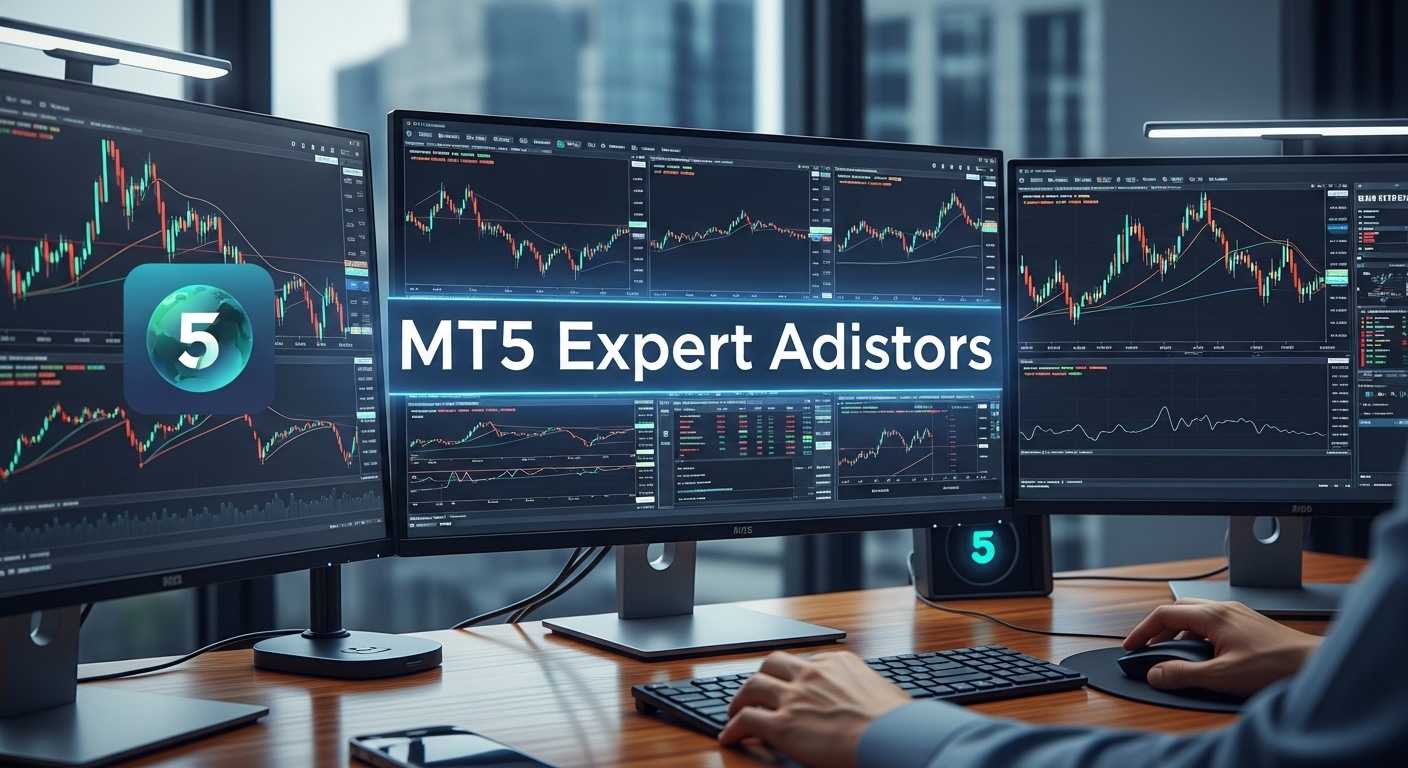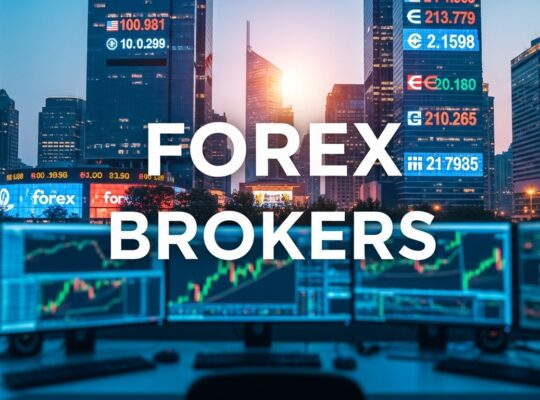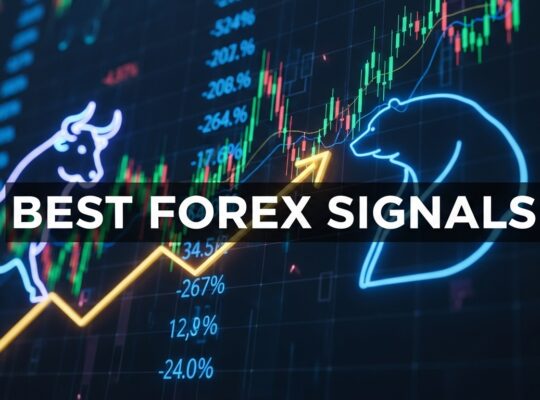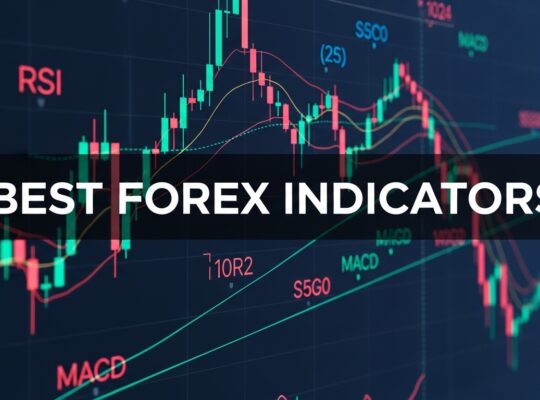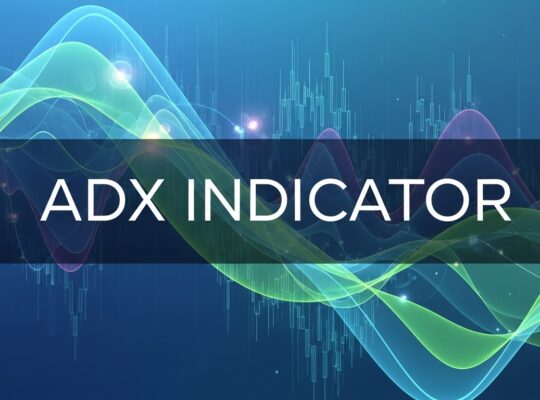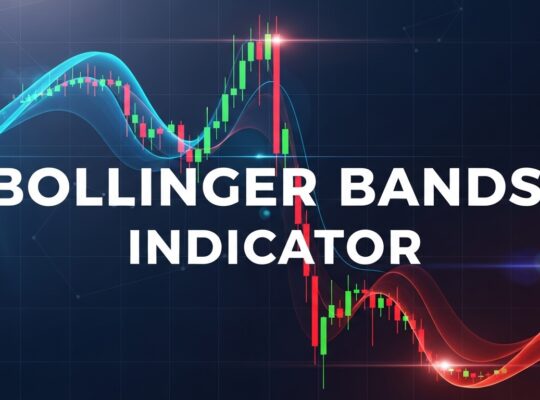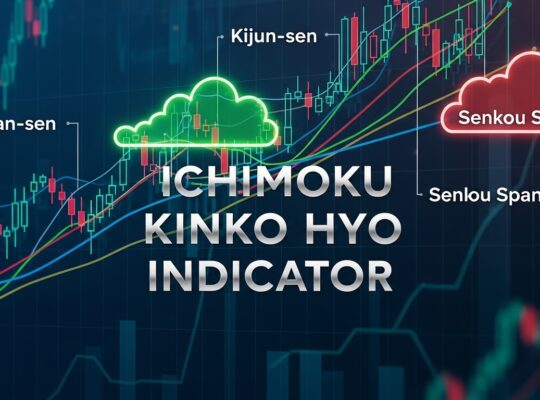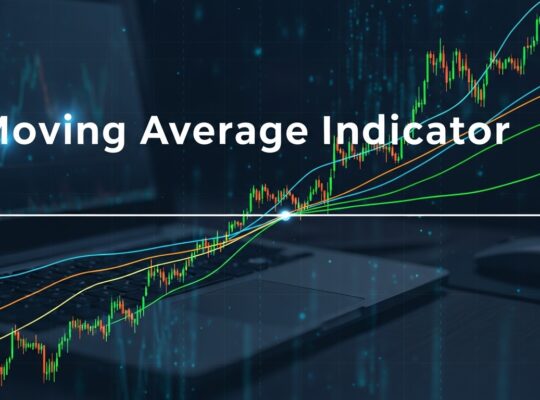In today’s fast-paced financial markets, the ability to trade around the clock without being glued to your screen has become not just a luxury, but a necessity. MT5 Expert Advisors, or EAs as they’re commonly known, represent one of the most powerful tools available to retail forex traders. These automated trading systems can analyze market conditions, identify opportunities, and execute trades based on predetermined rules – all without human intervention.
The significance of this technology cannot be overstated. While you’re managing your day job, sleeping, or spending time with family, your MT5 Expert Advisor can be working tirelessly, scanning multiple currency pairs, applying complex trading strategies, and managing risk according to your specific parameters. It’s like having a tireless trading assistant that never gets emotional, never second-guesses a strategy, and never needs a coffee break.
Whether you’re a beginner looking to automate your first trading strategy or an experienced trader seeking to optimize your current approach, understanding MT5 Expert Advisors will fundamentally change how you think about forex trading. This comprehensive guide will walk you through everything you need to know, from basic concepts to advanced optimization techniques, helping you harness the full power of automated trading in the MetaTrader 5 environment.
Understanding MT5 Expert Advisors: The Foundation of Automated Trading

At its core, an MT5 Expert Advisor is a sophisticated piece of software that operates within the MetaTrader 5 platform, designed to automate your trading decisions and executions. Think of it as a digital trader that follows a set of predefined rules with mathematical precision. Unlike human traders who might hesitate, second-guess, or let emotions cloud their judgment, an Expert Advisor executes trades based purely on the logic programmed into its code.
The technology behind MT5 Expert Advisors represents a significant evolution from earlier automated trading systems. Built on the MQL5 programming language, these tools can process vast amounts of market data in milliseconds, identify patterns that might escape human observation, and execute multiple trades across different currency pairs simultaneously. This processing power gives traders access to sophisticated strategies that would be impossible to implement manually.
What sets MT5 Expert Advisors apart from their MT4 predecessors is their enhanced capability to handle complex multi-timeframe analysis. While an MT4 EA might analyze price action on a single timeframe, MT5 Expert Advisors can simultaneously evaluate market conditions across multiple timeframes, creating a more comprehensive view of market dynamics. This multi-dimensional analysis often results in more accurate signal generation and better trade timing.
The relationship between an Expert Advisor and the MT5 platform is symbiotic. The platform provides real-time market data, execution capabilities, and backtesting facilities, while the EA provides the intelligence to interpret this data and make trading decisions. This integration means that your Expert Advisor has access to the same market information and execution speed as professional institutional trading systems.
Modern MT5 Expert Advisors can be categorized into several distinct types, each designed for specific market conditions and trading objectives. Trend-following EAs excel in markets with clear directional movement, using indicators like moving averages and momentum oscillators to identify and ride market trends. These systems typically perform well during trending market phases but may struggle in sideways or choppy conditions.
Scalping Expert Advisors represent another popular category, designed to capture small price movements over very short timeframes. These systems often execute dozens or even hundreds of trades per day, aiming to profit from minor price fluctuations. The success of scalping EAs heavily depends on execution speed and low spreads, making them particularly suitable for traders with access to premium trading conditions.
Grid trading EAs employ a different approach entirely, placing buy and sell orders at predetermined intervals above and below the current market price. As the market moves, these systems capture profits from price oscillations while maintaining a hedged position. While grid strategies can be profitable in ranging markets, they require careful risk management to avoid catastrophic losses during strong trending movements.
For traders interested in fundamental analysis, news trading Expert Advisors offer automated solutions for capitalizing on market volatility around economic announcements. These systems monitor economic calendars and can execute trades within milliseconds of news releases, taking advantage of the rapid price movements that often follow significant economic data.
How MT5 Expert Advisors Work: The Mechanics of Automated Success
Understanding how MT5 Expert Advisors function internally helps traders appreciate their capabilities and limitations. At the most fundamental level, every Expert Advisor operates on an event-driven programming model. The MT5 platform continuously feeds market data to the EA, triggering various functions based on specific events such as new price ticks, timer events, or trade executions.

The primary engine of any Expert Advisor is the OnTick() function, which executes every time new price data arrives from the broker. During each tick, the EA performs a series of operations that might include checking for new trading signals, managing existing positions, updating stop-loss and take-profit levels, or calculating risk parameters. This continuous monitoring ensures that the system can respond to market changes in real-time.
Signal generation represents the heart of most Expert Advisors. This process involves analyzing current and historical market data using various technical indicators, price patterns, or mathematical models. A trend-following EA might combine multiple moving averages with momentum indicators to identify the strength and direction of market trends. When all conditions align according to the EA’s programmed logic, it generates a trading signal.
The sophistication of signal generation has evolved dramatically with MT5’s enhanced capabilities. Modern Expert Advisors can incorporate complex mathematical models, including machine learning algorithms, neural networks, or statistical arbitrage techniques. Some advanced systems analyze correlation between different currency pairs, interest rate differentials, or even sentiment indicators derived from news feeds or social media.
Once a trading signal is generated, the Expert Advisor moves to the execution phase. This involves more than simply placing a buy or sell order. The EA must determine the appropriate position size based on current account balance, risk parameters, and volatility conditions. It calculates optimal entry prices, sets protective stop-loss orders, and establishes profit targets according to the strategy’s rules.
Risk management integration distinguishes professional-grade Expert Advisors from simple automated trading scripts. Sophisticated EAs continuously monitor account equity, calculate current drawdown levels, and adjust position sizes accordingly. Some systems implement dynamic risk management, increasing position sizes during profitable periods and reducing exposure during drawdown phases.
Position management represents another critical component of Expert Advisor functionality. Once a trade is open, the EA must monitor its progress and make decisions about when and how to close the position. This might involve trailing stop-losses to lock in profits, partial position closures at predetermined profit levels, or time-based exits when trades remain open too long without reaching their targets.
The integration with MT5’s Strategy Tester provides Expert Advisors with powerful backtesting capabilities. This feature allows traders to test their EAs against years of historical data, evaluating performance across different market conditions and time periods. The testing process reveals crucial information about the system’s profitability, maximum drawdown, win rate, and other key performance metrics.
Installing and Setting Up MT5 Expert Advisors: Your Gateway to Automation
The journey from manual trading to automated success begins with properly installing and configuring your first MT5 Expert Advisor. This process, while straightforward, requires attention to detail to ensure optimal performance and security. Understanding each step will save you time and prevent common issues that can derail your automated trading journey.
The first consideration when acquiring Expert Advisors involves choosing reliable sources. The official MQL5 Market offers the safest option, providing vetted EAs with user reviews, performance statistics, and developer support. These Expert Advisors undergo testing procedures and come with usage guidelines, making them ideal for beginners. However, many professional traders also develop custom solutions or purchase EAs from specialized third-party developers who offer more unique strategies.
Before installing any Expert Advisor, ensure your MT5 platform is properly configured and up to date. The platform should be connected to a reliable broker with good execution conditions, as the performance of your EA heavily depends on the quality of your trading environment. Low spreads, minimal slippage, and fast execution speeds are particularly crucial for strategies that rely on quick market entry and exit.
The physical installation process involves copying the Expert Advisor files to the correct directory within your MT5 installation. Navigate to the platform’s data folder and locate the “Experts” subdirectory. This is where all EA files should be placed. If your Expert Advisor comes with additional files such as custom indicators or include libraries, these must be placed in their respective directories to ensure proper functionality.
Compilation represents a critical step that many newcomers overlook. After placing the files, open the MetaEditor and compile the Expert Advisor source code. This process converts the human-readable MQL5 code into executable instructions that the MT5 platform can understand. Successful compilation is indicated by the absence of error messages in the compilation log. If errors occur, they typically relate to missing dependencies or syntax issues that require resolution before the EA can function.
Platform security settings often prevent Expert Advisors from running by default. Access the MT5 options menu and navigate to the Expert Advisors tab. Here, you must enable algorithmic trading and, if required by your EA, allow DLL imports and external expert imports. These settings control how Expert Advisors interact with external resources and the internet. While enabling these features is often necessary, be cautious about running EAs from untrusted sources with these permissions enabled.
The initial configuration of your Expert Advisor parameters requires careful consideration of your trading objectives and risk tolerance. Most EAs provide numerous input parameters that control everything from lot sizes and risk percentages to specific strategy variables like indicator periods or signal thresholds. Take time to understand each parameter’s function before making changes, as improper configuration can significantly impact performance.
Testing your installation before risking real money is absolutely essential. Start by running the Expert Advisor on a demo account with the same conditions as your intended live trading environment. This allows you to verify that the EA is functioning correctly, executing trades as expected, and responding appropriately to various market conditions. Monitor the system closely during the initial testing period, looking for any unusual behavior or error messages.
The MT5 Strategy Tester provides an excellent environment for initial validation. Run a quick backtest covering recent market data to ensure the EA produces reasonable results and doesn’t generate excessive losses or unrealistic profits. While backtesting results don’t guarantee future performance, they can reveal obvious installation or configuration issues.
Configuring and Optimizing MT5 Expert Advisors: Fine-Tuning for Success
The difference between a profitable Expert Advisor and one that drains your account often lies not in the underlying strategy, but in how well the system is configured and optimized for specific market conditions and trading objectives. This optimization process requires a deep understanding of both the EA’s parameters and the market environment in which it operates.
Parameter configuration begins with understanding the core settings that control your Expert Advisor’s behavior. Lot size determination represents one of the most critical decisions, as it directly impacts both potential profits and risk exposure. Fixed lot sizing offers simplicity and predictability, making it easier to calculate potential outcomes. However, percentage-based position sizing often provides better risk management by adjusting trade sizes according to account balance fluctuations.
Risk management parameters deserve particular attention during configuration. Maximum drawdown limits protect your account from catastrophic losses by pausing trading when losses exceed predetermined thresholds. Stop-loss and take-profit settings should align with your strategy’s theoretical framework while considering practical market conditions like average daily ranges and volatility levels.
Time-based filters can dramatically improve Expert Advisor performance by restricting trading to optimal market conditions. Many successful traders configure their EAs to avoid trading during low-liquidity periods like market opens and closes, or during major news events that can cause unpredictable price movements. Understanding your broker’s trading session characteristics helps optimize these time filters for maximum effectiveness.
The optimization process involves systematically testing different parameter combinations to identify configurations that maximize performance while minimizing risk. MT5’s Strategy Tester provides sophisticated optimization capabilities, including genetic algorithms that can test thousands of parameter combinations efficiently. However, successful optimization requires more than just finding the combination with the highest profit.
Overfitting represents one of the most dangerous pitfalls in Expert Advisor optimization. This occurs when parameters are optimized so specifically for historical data that the system fails to perform well in future market conditions. To avoid overfitting, use out-of-sample testing periods and validate optimized parameters across multiple time periods and market conditions.
Walk-forward analysis provides a more robust approach to optimization than simple backtesting. This technique involves repeatedly optimizing parameters on a specific period, then testing the optimized system on subsequent data. This process more closely simulates real-world trading conditions where parameters might need periodic adjustment based on changing market dynamics.
Market condition awareness should guide your optimization efforts. Parameters that work well during trending markets might be disastrous during ranging conditions. Consider developing different parameter sets for different market environments, or choose Expert Advisors specifically designed to adapt automatically to changing conditions.
Performance monitoring setup is crucial for ongoing optimization. Configure your Expert Advisor to maintain detailed logs of all trading activity, including entry and exit reasons, market conditions at the time of trades, and performance metrics. Regular analysis of these logs can reveal patterns that suggest parameter adjustments or identify market conditions where the system performs poorly.
The correlation between different optimization metrics requires careful consideration. While maximum profit might seem like the obvious optimization target, experienced traders often prioritize metrics like profit factor, maximum drawdown, or consistency measures. A system that generates steady, modest profits with low drawdown often outperforms one with higher profits but extreme volatility.
Popular MT5 Expert Advisors: Navigating the Landscape of Automated Solutions
The MT5 ecosystem offers an impressive array of Expert Advisors, ranging from simple trend-following systems to sophisticated algorithmic trading solutions that rival institutional-grade software. Understanding the landscape of available options helps traders make informed decisions about which systems align with their trading objectives and risk tolerance.
Free Expert Advisors provide an excellent starting point for newcomers to automated trading. The MT5 platform includes several sample EAs that demonstrate basic trading concepts while providing functional automated systems. The MACD Sample EA, for instance, uses the classic MACD indicator to identify trend changes and generate trading signals. While simple, this EA illustrates fundamental concepts like signal generation, risk management, and trade execution that apply to more complex systems.
The Moving Average Expert Advisor represents another popular free option, implementing a straightforward trend-following strategy based on moving average crossovers. This system typically buys when fast-moving averages cross above slower ones and sells when the opposite occurs. Despite its simplicity, many traders find success with moving average strategies, particularly in strongly trending markets.
Community-developed Expert Advisors available through forums and code repositories offer more sophisticated functionality without the cost of commercial systems. These solutions often incorporate unique approaches developed by experienced traders who share their work with the broader community. However, using community-developed EAs requires more technical knowledge, as they typically come with limited support and documentation.
Commercial Expert Advisors represent the professional tier of automated trading solutions. These systems often incorporate years of development, extensive backtesting, and ongoing optimization by experienced teams. Popular commercial EAs frequently offer advanced features like multi-timeframe analysis, adaptive parameter adjustment, and sophisticated risk management systems that surpass what’s available in free alternatives.
Performance evaluation of any Expert Advisor requires looking beyond simple profit figures. Win rate provides insight into how frequently the system generates profitable trades, but must be considered alongside average profit per trade and maximum drawdown figures. A system with a 90% win rate might still lose money if the occasional losing trade is much larger than the average winning trade.
Drawdown analysis reveals crucial information about an Expert Advisor’s risk characteristics. Maximum historical drawdown shows the largest peak-to-valley decline in account equity, helping traders understand the worst-case scenario they might face. Recovery time from drawdowns indicates how quickly the system can return to profitability after experiencing losses.
User reviews and ratings provide valuable insights into real-world performance and user experience. However, approach reviews critically, as some may be biased or based on insufficient testing periods. Look for detailed reviews that discuss specific market conditions, parameter settings, and performance over extended periods rather than short-term results.
Developer reputation and support quality significantly impact the long-term value of commercial Expert Advisors. Established developers with track records of successful products typically provide better ongoing support, regular updates, and improvements based on changing market conditions. They’re also more likely to stand behind their products and provide assistance when issues arise.
Specialization can be a significant advantage when choosing Expert Advisors. Systems designed specifically for scalping, swing trading, or particular currency pairs often outperform generic solutions. Scalping-focused EAs typically include features optimized for high-frequency trading, such as advanced order management and latency optimization. Similarly, swing trading EAs might incorporate longer-term trend analysis and position holding capabilities.
Creating Custom MT5 Expert Advisors: Building Your Automated Trading Vision
The ultimate expression of automated trading involves creating Expert Advisors that implement your unique trading strategies and risk management approaches. While the learning curve can be steep, the ability to translate your trading ideas into automated systems opens unlimited possibilities for strategy implementation and testing.

MQL5 programming forms the foundation of Expert Advisor development, offering a C++-like syntax that provides both power and flexibility. The language includes extensive built-in functions for technical analysis, trade management, and market data access. Unlike simpler scripting languages, MQL5 supports object-oriented programming concepts, allowing for sophisticated system architecture and code reusability.
Understanding the basic structure of Expert Advisors is essential before diving into development. Every EA contains three primary functions that handle different aspects of system operation. The OnInit() function executes once when the EA starts, handling initialization tasks like setting up variables, validating parameters, and preparing indicators. The OnTick() function runs with every new price quote, containing the main trading logic that analyzes market conditions and makes trading decisions. The OnDeinit() function executes when the EA stops, performing cleanup tasks and saving any necessary data.
Development environment setup requires familiarity with MetaEditor, the integrated development environment provided with MT5. This tool offers syntax highlighting, debugging capabilities, and direct integration with the Strategy Tester for immediate testing. Learning to use MetaEditor efficiently significantly accelerates the development process and helps identify and resolve issues quickly.
Strategy implementation begins with clearly defining your trading rules in logical terms. Successful automated strategies typically have well-defined entry conditions, exit rules, and risk management parameters. Vague concepts like “buy when the market looks bullish” must be translated into specific, measurable conditions that a computer can evaluate consistently.
Technical indicator integration represents a common starting point for many custom Expert Advisors. MT5 provides built-in access to dozens of popular indicators, from simple moving averages to complex oscillators. Understanding how to properly call these functions, handle their return values, and incorporate them into trading logic is fundamental to most EA development projects.
Custom indicator development often becomes necessary when implementing unique trading strategies. While MT5 includes many standard indicators, proprietary strategies might require custom calculations or combinations of existing indicators. Learning to create custom indicators expands your development capabilities and allows for more sophisticated strategy implementation.
Error handling and robustness are crucial aspects of professional EA development. Markets can behave unpredictably, internet connections can fail, and brokers might reject orders for various reasons. Your Expert Advisor must handle these situations gracefully, continuing to operate safely even when unexpected conditions occur. Implementing comprehensive error handling prevents system crashes and protects your trading account.
Testing and debugging custom Expert Advisors requires systematic approaches and patience. The Strategy Tester provides the primary testing environment, allowing you to validate your EA’s behavior across different market conditions and time periods. However, testing goes beyond simple backtesting – you must verify that your code correctly implements your intended strategy and handles edge cases appropriately.
Code organization and documentation become increasingly important as your Expert Advisors grow more complex. Using clear variable names, commenting your code thoroughly, and organizing functions logically makes maintenance and modification much easier. Professional developers often spend as much time documenting and organizing code as they do writing initial implementations.
Advanced programming concepts open possibilities for sophisticated automated trading systems. Object-oriented programming allows for modular system design where different components handle specific aspects of trading logic. This approach facilitates code reuse, easier testing, and more maintainable systems. Some developers create EA frameworks that can be easily adapted for different strategies or market conditions.
Best Practices and Risk Management: Safeguarding Your Automated Trading Journey
Success with MT5 Expert Advisors extends far beyond simply finding profitable systems or developing sophisticated algorithms. The difference between long-term success and catastrophic failure often lies in implementing robust risk management practices and following time-tested best practices that protect your trading capital while maximizing growth potential.
System evaluation must begin before any Expert Advisor touches your live trading account. Comprehensive backtesting provides the foundation for understanding how a system behaves across different market conditions, but backtesting alone is insufficient. The quality of historical data significantly impacts backtest reliability, making it essential to use high-quality tick data that accurately reflects real market conditions including spreads, slippage, and execution delays.
Forward testing represents an often-overlooked but crucial step in Expert Advisor evaluation. This process involves running your EA on a demo account using current market conditions for an extended period before committing real money. Forward testing reveals issues that backtesting might miss, such as how the system handles news events, weekend gaps, or unusual market volatility. A minimum forward testing period of one to three months typically provides sufficient data to evaluate system stability and performance consistency.
Position sizing strategy can make or break your automated trading success regardless of how profitable your Expert Advisor appears in testing. Fixed lot sizing offers simplicity and predictability but ignores account growth and risk tolerance changes. Percentage-based position sizing adjusts trade sizes according to account balance, allowing for geometric growth during profitable periods while reducing exposure during drawdowns. More sophisticated approaches might consider market volatility, correlation between positions, or recent system performance when determining position sizes.
Diversification principles apply as much to automated trading as to traditional portfolio management. Running multiple Expert Advisors with different strategies, timeframes, or currency pair focuses reduces overall portfolio risk and can smooth equity curves. However, diversification requires careful consideration of correlation between systems. Two EAs that use similar indicators or trading logic might appear diversified but actually increase risk by doubling exposure to specific market conditions.
Risk monitoring must become an ongoing discipline rather than a one-time configuration. Successful automated traders establish clear rules for when to pause or modify their Expert Advisors based on performance metrics. These might include maximum drawdown thresholds, consecutive losing streaks, or changes in market volatility that fall outside the system’s tested parameters. Having predetermined rules prevents emotional decisions during stressful periods.
Market condition awareness helps optimize Expert Advisor performance and avoid periods when systems are likely to struggle. Many successful strategies perform well during specific market regimes but struggle when conditions change. Trend-following systems might excel during directional markets but suffer during consolidation periods. Understanding these relationships allows traders to adjust parameters or temporarily disable systems during unfavorable conditions.
Account protection measures provide the final line of defense against catastrophic losses. These might include hard stops that halt all trading when account equity falls below predetermined levels, daily loss limits that pause trading after significant losing days, or correlation monitors that prevent excessive exposure when multiple positions move against you simultaneously. While these protective measures might occasionally interrupt profitable streaks, they’re essential for long-term capital preservation.
Regular performance review and system maintenance ensure that your Expert Advisors continue operating effectively as market conditions evolve. This involves analyzing trading logs to identify patterns in winning and losing trades, monitoring key performance metrics for deterioration, and staying informed about market structure changes that might impact your systems. Some strategies require periodic parameter updates or complete rebuilding as markets evolve.
Technology infrastructure considerations often receive insufficient attention but can significantly impact automated trading success. Reliable internet connectivity, uninterrupted power supply, and adequate computer processing power are essential for consistent EA performance. Many serious automated traders invest in virtual private servers specifically configured for trading to ensure their systems operate continuously without interruption.
Advanced Optimization and Performance Enhancement: Maximizing Your EA’s Potential
Moving beyond basic configuration and into advanced optimization techniques separates casual users from serious automated traders who consistently extract maximum performance from their Expert Advisors. These sophisticated approaches require deeper understanding of both market dynamics and system behavior, but they can dramatically improve long-term results.

Multi-timeframe analysis represents one of the most powerful optimization techniques available to MT5 Expert Advisors. While single-timeframe systems make decisions based on price action at one specific interval, multi-timeframe approaches combine information from multiple time horizons to create more robust trading signals. A system might use weekly charts to determine overall trend direction, daily charts to identify optimal entry zones, and hourly charts to fine-tune entry and exit timing.
Adaptive parameter adjustment allows Expert Advisors to modify their behavior based on changing market conditions. Rather than using fixed parameters that might become obsolete as markets evolve, adaptive systems continuously monitor market characteristics and adjust their settings accordingly. This might involve lengthening indicator periods during low-volatility periods or adjusting stop-loss distances based on recent average true range calculations.
Portfolio-level optimization considers how multiple Expert Advisors interact within your overall trading system. This approach goes beyond optimizing individual EAs to focus on how different systems complement each other. The goal is maximizing overall portfolio performance while minimizing correlation and drawdown. This might involve adjusting individual system parameters to reduce overlap or timing trades from different EAs to avoid excessive exposure during specific market conditions.
Machine learning integration represents the cutting edge of Expert Advisor optimization. Advanced developers incorporate neural networks, genetic algorithms, or other artificial intelligence techniques to create systems that learn from market data and adapt their behavior automatically. While complex to implement, these approaches can identify patterns and relationships that traditional technical analysis might miss.
Volatility-adjusted optimization recognizes that market conditions change over time and that parameters optimized for one volatility regime might be suboptimal for another. Systems incorporating volatility adjustment might use shorter-term signals during high-volatility periods when trends develop quickly, while switching to longer-term analysis during stable market conditions. This adaptive approach helps maintain performance consistency across different market environments.
Correlation monitoring becomes crucial when operating multiple Expert Advisors simultaneously. Systems that appear independent might actually respond similarly to specific market conditions, creating unexpected concentration risk. Advanced correlation monitoring tracks not just price correlations between currency pairs, but behavioral correlations between different EAs, adjusting position sizes or trading frequency when correlation levels become excessive.
Dynamic risk management adjusts risk parameters based on recent system performance and market conditions. Rather than using fixed stop-loss or position size rules, dynamic systems might reduce risk exposure following losing streaks while increasing position sizes during profitable periods. This approach can improve risk-adjusted returns by capitalizing on system momentum while protecting capital during difficult periods.
Real-time performance monitoring goes beyond simple profit and loss tracking to analyze system behavior in detail. Advanced monitoring systems track metrics like trade execution latency, slippage costs, and market impact to identify optimization opportunities. They might also monitor external factors like economic news releases or market sentiment indicators that could impact EA performance.
Backtesting sophistication must match the complexity of your optimization efforts. Monte Carlo analysis tests your Expert Advisor against thousands of randomly generated market scenarios to understand performance ranges and worst-case possibilities. Walk-forward optimization repeatedly re-optimizes parameters on rolling time windows to simulate how the system would perform with periodic parameter updates.
Troubleshooting and Problem Resolution: Overcoming Common Challenges
Even the most carefully configured Expert Advisors occasionally encounter problems that can disrupt trading operations or impact performance. Understanding common issues and their solutions helps maintain consistent automated trading operations while minimizing disruption to your trading strategy.
Connection and platform stability issues represent the most frequent challenges faced by automated traders. Expert Advisors depend on continuous data feeds and reliable connections to function properly. Intermittent internet connectivity can cause missed trading opportunities, delayed order executions, or incomplete market data that affects signal generation. Establishing redundant internet connections or using virtual private servers specifically configured for trading helps minimize these risks.
Order execution problems often manifest as rejected trades, unexpected slippage, or orders that execute at significantly different prices than expected. These issues might stem from broker-related factors like insufficient liquidity, market gaps, or platform limitations during high-volatility periods. Understanding your broker’s execution characteristics and adjusting Expert Advisor parameters accordingly can mitigate many execution-related problems.
Memory and resource management issues become apparent when Expert Advisors consume excessive system resources or cause platform instability. Poorly coded EAs might create memory leaks, inefficient calculations, or excessive file operations that impact overall system performance. Monitoring system resource usage and optimizing code efficiency helps prevent these problems from affecting trading operations.
Data quality problems can significantly impact Expert Advisor performance without being immediately obvious. Missing price ticks, incorrect historical data, or inconsistent spread information can cause systems to generate false signals or make inappropriate trading decisions. Regular data validation and using high-quality data sources helps ensure that your EAs operate with accurate market information.
Parameter drift occurs when market conditions change sufficiently that previously optimal EA settings become suboptimal or even counterproductive. This gradual degradation might not be immediately apparent but can slowly erode system performance over time. Regular performance monitoring and periodic parameter review help identify when adjustments might be necessary.
Strategy degradation represents a more fundamental challenge where the underlying market inefficiencies that an Expert Advisor exploits become less profitable over time. This might occur due to increased market efficiency, changes in market structure, or other traders adopting similar strategies. Recognizing strategy degradation early allows for timely adjustments or system replacement before significant losses occur.
Broker compatibility issues sometimes arise when Expert Advisors are developed for specific broker environments but used with different providers. Differences in naming conventions, trading session times, or order execution methods can cause unexpected behavior. Testing EAs thoroughly with your specific broker and understanding any unique characteristics of their trading environment helps prevent compatibility problems.
Version control and backup procedures become essential when managing multiple Expert Advisors or making frequent modifications. Maintaining proper records of which versions perform best under different conditions and backing up profitable configurations prevents loss of optimization work. This is particularly important when experimenting with parameter changes or system modifications.
Diagnostic tools and logging capabilities help identify and resolve problems quickly when they occur. Professional Expert Advisors typically include comprehensive logging features that record trading decisions, market conditions, and system status information. Analyzing these logs during problem periods often reveals the root causes of issues and suggests appropriate solutions.
Conclusion: Mastering the Art and Science of Automated Trading
The journey through the world of MT5 Expert Advisors reveals both the tremendous potential and inherent complexities of automated trading. From basic installation procedures to advanced optimization techniques, successful implementation requires combining technical knowledge with sound trading principles and disciplined risk management practices.
The power of Expert Advisors lies not just in their ability to trade without human intervention, but in their capacity to implement sophisticated strategies with consistency and precision that human traders struggle to maintain. They eliminate emotional decision-making, execute complex multi-timeframe analysis simultaneously, and operate continuously across global markets. However, this power comes with responsibility – the responsibility to understand how these systems work, monitor their performance, and adapt them to changing market conditions.
Success with MT5 Expert Advisors requires viewing them as tools rather than magic solutions. The most profitable automated trading operations combine well-designed systems with proper risk management, continuous monitoring, and ongoing optimization. They recognize that no single Expert Advisor works perfectly in all market conditions and build diversified automated trading portfolios that can adapt to changing market dynamics.
The landscape of automated trading continues evolving rapidly, with artificial intelligence, machine learning, and advanced algorithmic techniques becoming increasingly accessible to retail traders. However, the fundamental principles of successful automated trading remain constant: thorough testing, robust risk management, continuous monitoring, and adaptive optimization.
Your next steps should align with your current experience level and trading objectives. Beginners benefit from starting with simple, well-tested systems while learning the fundamentals of automated trading. Intermediate traders might focus on optimizing existing systems or exploring multi-EA approaches. Advanced practitioners can push boundaries by developing custom solutions or implementing cutting-edge techniques like machine learning integration.
The Expert Advisor ecosystem provides unprecedented opportunities for traders willing to invest time in understanding and properly implementing these powerful tools. Whether you choose free systems, commercial solutions, or custom development, the key to success lies in approaching automated trading with the same discipline and careful analysis you would apply to any serious investment strategy.
Take the first step today by thoroughly testing an Expert Advisor on a demo account, focusing on understanding how it makes decisions rather than just watching profits accumulate. Join the MT5 community forums to learn from other traders’ experiences, and never stop educating yourself about both the technical aspects of Expert Advisors and the broader principles of successful trading.
The future of retail forex trading is increasingly automated, and mastering MT5 Expert Advisors positions you at the forefront of this evolution. Start building your automated trading expertise now, and transform your approach to the forex markets forever.
Frequently Asked Questions About MT5 Expert Advisors
What is the difference between MT4 and MT5 Expert Advisors?
MT5 Expert Advisors offer several significant advantages over their MT4 counterparts. They support multi-timeframe analysis within a single EA, meaning one system can simultaneously analyze price action across different time periods for more comprehensive market evaluation. MT5 EAs also benefit from object-oriented programming capabilities in MQL5, allowing for more sophisticated system architecture and better code organization. Additionally, MT5 provides enhanced backtesting features with more accurate modeling and faster optimization processes. The platform also supports more order types and advanced features like economic calendar integration and improved debugging tools.
How much money do I need to start using MT5 Expert Advisors?
The capital requirements for MT5 Expert Advisors vary significantly based on your chosen strategy and risk management approach. Many EAs can operate effectively with accounts as small as $100-$500, though larger accounts provide more flexibility in position sizing and risk management. More important than the absolute amount is ensuring you only risk money you can afford to lose completely. Consider that Expert Advisors require time for proper testing and optimization, during which you might experience losses. Most successful automated traders recommend starting with smaller amounts while learning the systems, then gradually increasing capital as you gain experience and confidence in your chosen EAs.
Can I run multiple Expert Advisors simultaneously on MT5?
Yes, MT5 supports running multiple Expert Advisors simultaneously, either on different charts or even multiple EAs on the same chart with proper configuration. This multi-EA approach can provide diversification benefits by spreading risk across different strategies, timeframes, or currency pairs. However, running multiple EAs requires careful consideration of correlation between systems, total risk exposure, and potential conflicts in trade management. You must also ensure your computer has sufficient processing power and memory to handle multiple systems effectively. Many professional traders use this approach to create comprehensive automated trading portfolios.
How do I know if an Expert Advisor is legitimate and not a scam?
Evaluating Expert Advisor legitimacy requires careful analysis of several factors. Look for systems with transparent performance records, detailed backtesting results, and realistic profit expectations. Avoid EAs promising guaranteed profits or extremely high returns with no risk. Legitimate systems typically show modest but consistent profits with clearly documented drawdown periods. Check developer reputation through user reviews and forum discussions. Be particularly wary of systems that require large upfront payments without trial periods or money-back guarantees. Always test any EA thoroughly on a demo account before risking real money, regardless of marketing claims or testimonials.
What should I do if my Expert Advisor stops working or starts losing money?
When an Expert Advisor encounters problems, first determine whether the issue is technical or performance-related. Check for obvious technical problems like internet connectivity, platform updates, or broker-related issues. Review recent trades to identify patterns in losses – are they related to specific market conditions, news events, or systematic issues? If the EA is experiencing normal drawdown within historical parameters, patience might be appropriate. However, if losses exceed backtested expectations or the system behaves erratically, consider pausing the EA while investigating. Keep detailed logs of EA performance to help identify when problems began and what might have triggered them. Sometimes market conditions change temporarily, requiring patience rather than immediate system changes. Always have predetermined rules for when to pause or modify your EAs based on specific performance metrics.
Do I need programming knowledge to use MT5 Expert Advisors effectively?
While programming knowledge isn’t strictly required to use existing MT5 Expert Advisors, having basic understanding of MQL5 concepts significantly enhances your success. You can successfully use commercial or free EAs by learning to configure parameters, understand backtesting results, and monitor performance without coding skills. However, programming knowledge becomes valuable for customizing existing systems, creating unique strategies, or troubleshooting issues. Many traders start with pre-built EAs and gradually learn programming as their experience grows. The investment in learning basic MQL5 programming pays dividends through better system understanding, customization capabilities, and the ability to create truly unique trading strategies that aren’t available to other traders.



